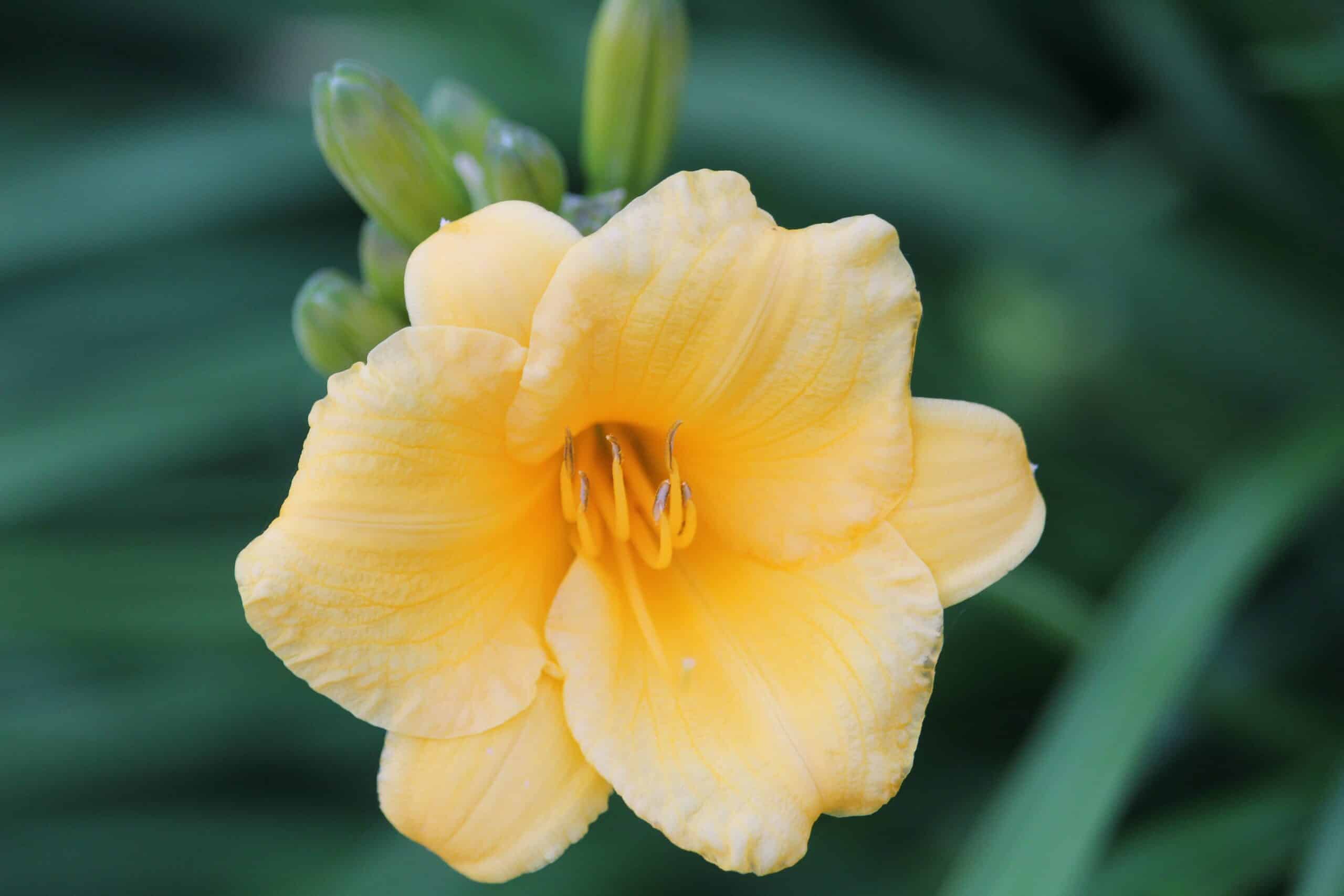The lily magnolia, with its soft petals of white and pink, is like a breath of fresh air in any garden. Its delicate leaves and beautiful flowers evoke a sense of calmness and tranquility that can be enjoyed by gardeners of all levels. As one of the most popular types of magnolia, the lily magnolia is a great choice for anyone looking to bring some beauty into their outdoor space.
As a specialist in botany and gardening, I’m here to tell you all about this magnificent plant and how best to care for it. The lily magnolia requires minimal effort when it comes to upkeep – it only needs occasional watering and trimming – but there are still some important tips for ensuring optimum growth. This guide will provide all the information you need on watering, pruning, fertilizing, pest control, and more!
Whether you’re just starting out with your first garden or have had experience caring for plants before, this guide will help make sure your lily magnolia is as healthy as possible. With its stunning foliage and sweet-smelling flowers, you’ll be sure to find plenty of moments of joy while tending to this plant throughout the season!
Overview Of Lily Magnolia
The lily magnolia (Magnolia iliflora) is a beautiful flowering plant that adds a unique charm to any garden. Its delicate and fragrant flowers bloom in shades of white and pink, creating an enchanting display. As with all plants, proper care and attention are essential for keeping the lily magnolia healthy and thriving. With the right information, anyone can be a master gardener when it comes to caring for this magnificent flower.
When planting lily magnolias, it’s important to select a location that provides full or partial sun exposure and well-drained soil. This species of magnolia prefers loose, moist soil but will tolerate drier conditions as long as its roots are not sitting in standing water. Once planted, water deeply but sparingly—magnolias do not do well with overwatering—and add mulch around the base of the plant to help keep moisture in the soil. Pruning should be done in late winter or early spring before new growth begins; prune only dead or damaged branches and never prune more than one-third of the tree’s foliage at once.
Finally, fertilizing is also necessary for lily magnolias; use an organic fertilizer such as composted manure during the growing season every few weeks or so. Be sure to follow directions on the package carefully, as overfertilization can damage these plants. With these tips in mind, you’ll be able to create a lush landscape featuring this gorgeous flower!
Types Of Lily Magnolia
There are over 80 varieties of lily magnolia, making it one of the largest and most diverse flowering plant families. With such a wide array of types, the possibilities for using these spectacular blooms in the garden are endless! Here are four key points to consider when determining which type of lily magnolia is right for you:
Location: Where will you be planting your lily magnolia? Different varieties thrive in different climates and soil conditions, so make sure to choose one that is suitable for your region.
Flower color: While most varieties feature white or pink blooms, some have yellow or purple flowers. If you’re looking for something more exotic, consider one of the rarer colors!
Growth habit: Some lily magnolias grow low to the ground while others can reach heights of up to 25 feet tall. Knowing how large your chosen variety will get will help determine where you should plant it.
Bloom time: Some types of lily magnolias bloom in spring while others flower in summer or fall. Make sure to select a variety that will provide a continuous display throughout the season!
No matter which type of lily magnolia you choose, it’s sure to bring beauty and joy to your garden all year long!
Where To Plant Lily Magnolia
The placement of the lily magnolia is a critical factor in its growth, and it’s worth looking into why. Is there any scientific proof that supports the theory that different placements have an effect on the plant’s health? A study done by botanists at Cornell University has indicated that certain microclimates can influence the growth of a lily magnolia, specifically its flowering capacity. This means that where you plant your lily magnolia is an important consideration when it comes to maximizing the beauty of your flower.
So what kind of environment should you look for when planting your lily magnolia? The best location would be one with partial shade and well-draining soil, such as in a lightly wooded area. Avoid areas subject to strong winds and frost, as this could damage or even kill the plant. Additionally, make sure there is enough space for it to grow without being crowded out by other plants or trees.
Finally, consider how much sunlight will reach your lily magnolia throughout the day. If planted in full sun, it may need additional watering to ensure its roots don’t dry out too quickly. On the other hand, too much shade will reduce blooming potential and overall health of this beautiful flower. Once you’ve found an ideal spot for your lily magnolia, it’s time to move onto considering soil requirements for optimal growth and health.
Soil Requirements For Lily Magnolia
When caring for lily magnolia, it’s important to understand the soil requirements. This is because soil plays an important role in providing nutrients, water and air to the plant. While these plants grow best in acidic soils, they can tolerate a range of different soil types.
The ideal soil for lily magnolia is a well-drained, loamy soil with plenty of organic material. The pH level should be between 5.5 and 6.5, which is slightly acidic. If the pH level is too low or too high, you may need to amend the soil with materials such as compost or peat moss before planting your lily magnolia.
It’s also important to ensure that the soil remains moist but not soggy by providing adequate drainage and mulching around the base of the plant. Mulch helps maintain moisture levels and keep weeds at bay while also protecting the roots from extreme temperatures during winter and summer months.
Now that we’ve covered soil requirements for lily magnolia, let’s move on to sunlight requirements which are essential for healthy growth and flowering of this lovely flower.
Sunlight Requirements For Lily Magnolia
The lily magnolia (Magnolia iliflora) is a stunning flowering shrub that has become increasingly popular in recent years. It’s no wonder why – it produces a spectacular bloom of large, pink-tinged white flowers in early summer, making it an eye-catching addition to any garden. For those looking to add this beautiful plant to their landscape, it’s important to know the specific sunlight requirements for proper growth.
When considering the best spot for lily magnolia in your yard, keep in mind that these plants need at least 6 hours of direct sunlight each day. This will ensure that they receive enough light energy to produce strong and healthy blooms each year. Additionally, they can also tolerate some partial shade, but full sun is preferable if possible.
Lily magnolias are quite versatile in terms of soil type; as long as the soil drains well and is rich in organic matter, they should do just fine. However, be sure not to overcrowd them when planting; give them room to spread out and provide good air circulation around their roots. With the right amount of sun and well-draining soil, you’ll soon have a beautiful display of pink-tinged white blooms every summer!
Watering lily magnolias is key for keeping them healthy during the growing season – so let’s take a look at what kind of watering regime works best for these plants...
Watering Lily Magnolia
The lily magnolia is a stunning plant to behold, with its graceful white flowers filling the air with a sweet scent of spring. As captivating as it is, to maintain its beauty requires proper care and knowledge. Watering an lily magnolia correctly will ensure a long and healthy life:
• Understand the soil type. • Monitor soil moisture levels. • Know how much water your plant needs.
Firstly, understanding the soil type of your lily magnolia is essential for efficient watering. Clay soils hold onto moisture longer than sandy soils, so if you have clay soil you may need to water less frequently than if you had sandy soil. Secondly, monitoring the soil moisture level can help adjust the amount of water given to the plant accordingly; if it feels moist then the plant does not need any additional water at that time but if it feels dry then it is time to give some more water. Lastly, knowing how much water your plant needs is also important; usually an inch or two of water per week in warm weather should be enough for most plants in this genus.
When watering lily magnolias, remember to keep an eye on where you’re placing your hose or sprinkler; too much direct contact with their flowers can damage them and make them look unsightly. Additionally, avoid over-watering as this can lead to root rot or other diseases caused by fungal growth due to excess moisture staying in the root system for extended periods of time. With these three tips in mind and proper care from an experienced botanist or gardener, your lily magnolia will thrive and bring beauty into your garden for years to come!
Now that we know about watering our lily magnolias let’s move on and discuss pruning them for optimal health and growth…
Pruning Lily Magnolia
Pruning lily magnolia can be a daunting task, but it is essential for ensuring its health and beauty. To the untrained eye, this may seem like an unnecessary chore but there are many benefits to pruning your magnolia. When done correctly, it can help keep your plant looking beautiful while also promoting healthy growth and flowering.
As with any type of gardening or landscaping task, it is important to understand the basics of pruning before beginning work. With all plants, timing is key when pruning and with lily magnolia this is especially true. It should be cut back in the late winter or early spring before the new growth begins. This will help promote fuller blooms and more vibrant foliage throughout the season.
When pruning lily magnolia it is important to use sharp tools and make clean cuts at the correct angles. Make sure to remove any dead or damaged branches as well as any shoots that have grown too close together as these can cause overcrowding which can lead to disease and insect infestation. Also remember to prune away any stems that have grown outside of desired shape or size for a more aesthetically pleasing look in your garden or yard. By following these simple steps you can ensure that your lily magnolia will remain healthy and beautiful for years to come.
Now that you know how to properly prune your lily magnolia, turning our attention to fertilizing them could not be more timely!
Fertilizing Lily Magnolia
Fertilizing lily magnolia is an important part of its care and growth. It should be done in the spring before new growth begins, and then again in midsummer. The fertilizer used should be balanced, with equal parts of nitrogen, phosphorous, and potassium. A slow-release fertilizer is best for this plant as it provides more consistent nutrition over a longer period of time.
It’s also important to water the plant after fertilizing so that the nutrients can reach the roots. Make sure not to over-fertilize or you could damage the root system and cause leaf burn. Too little fertilizer won’t provide enough nutrition either, so it’s important to get it just right.
When applying fertilizer, use a liquid solution or granules that are applied around the base of the plant and watered in afterwards. You may need to fertilize more than once in a season depending on how much growth your lily magnolia has made since its last application.
TIP: If you’re unsure which type of fertilizer to use for your lily magnolia, check with your local nursery or garden center for advice on what works best for this specific species.
Pests And Diseases Of Lily Magnolia
According to the United States Department of Agriculture, lily magnolia (Magnolia iliflora) is hardy in zones 7 to 10, making it a popular choice for many gardeners. Unfortunately, this beautiful plant isn’t completely free from pests and diseases. Let’s take a look at what potential issues you may encounter when caring for your lily magnolia.
The most common issue seen when growing lily magnolia is fungal leaf spot caused by the fungus Phyllosticta citricola. This fungal infection will cause spots or lesions on the leaves, which can eventually result in defoliation if left untreated. Fungal leaf spot can be treated with a fungicidal spray, but prevention is key by making sure plants are spaced far enough apart to allow for good air circulation and not overcrowded.
In addition to fungal infections, lily magnolias can also be susceptible to various insect pests such as aphids and scale insects. These pests can cause damage to both foliage and flowers, so treating them quickly with an appropriate insecticide is important for maintaining healthy plants. Another thing to watch out for are slugs and snails; these mollusks love eating tender new growth so keeping them away from your lily magnolia should be a priority!
Overall, with proper care and maintenance, lily magnolias can make an excellent addition to any garden or landscape. With some vigilance against pests and diseases, you’ll be able to enjoy this beautiful specimen in all its glory! Now that we’ve discussed caring for lily magnolia let’s move on to propagating it…
Propagating Lily Magnolia
Propagating lily magnolia is a rewarding and straightforward process that can be done at home with minimal effort. In this section, we’ll discuss all the steps you’ll need to take in order to successfully propagate this beautiful flower.
To begin propagating, you’ll need to find some healthy stems or cuttings from existing lily magnolia plants. Make sure to select stems that are firm and free of any pests or diseases. Once you’ve gathered your cuttings, it’s important to prepare them properly for planting. Dip the ends of the cuttings into rooting hormone powder and let them sit for an hour before potting them up in a well-draining soil mixture.
Water the soil regularly and ensure that it’s kept moist but not soggy – too much water can cause root rot and severely damage the plant. Keep an eye out for signs of growth such as new leaves appearing on the stems; once they have grown strong roots, your lily magnolias are ready to be transplanted outdoors!
By following these simple steps, you should have no trouble propagating lily magnolia from cuttings – happy gardening!
Potential Uses Of Lily Magnolia
The lily magnolia, scientific name Magnolia iliflora, is a deciduous shrub that grows in many climates and can be used for a variety of purposes. For instance, the New York State Department of Environmental Conservation uses lily magnolia as an example of a shrub that can provide habitat for birds and other wildlife. With its abundant flowers and attractive foliage, this plant has potential uses ranging from landscaping to medicinal applications.
Gardeners often use lily magnolias to add texture and color to their gardens. The plant’s large white or pink blooms have a strong fragrance, making them perfect for adding beauty and fragrance to outdoor spaces. Due to its size and growth habits, the lily magnolia can be used as a hedging plant, either alone or combined with other species. In addition to being visually appealing, the lily magnolia is also resistant to most diseases and pests, making it ideal for gardeners who want low-maintenance plants.
The lily magnolia also has potential for medicinal purposes; its fragrant leaves are known to contain compounds with anti-inflammatory properties which may be beneficial in relieving pain associated with arthritis and other inflammatory conditions. Additionally, some herbalists believe that the flowers have sedative properties that may help reduce stress levels. As researchers continue to explore the potential healing powers of this plant, its many uses will become even more clear.
By combining beauty with practicality, the lily magnolia can bring enjoyment to any outdoor space while providing numerous benefits for both people and wildlife alike.
Best Companion Plants For Lily Magnolia
When it comes to companion planting for lily magnolia, there are several options. As a specialist in botany and gardening, I’ll go over the best companion plants for this beautiful flowering tree.
First off is the obvious choice: other flowering trees. Lily magnolia pairs well with many trees, including serviceberry (Amelanchier), dogwood (Cornus florida), and pear (Pyrus). These trees can provide shade when planted near lily magnolia, and their colorful blooms will help create an eye-catching landscape design.
Another great option for companion planting is native shrubs. Plants like northern bayberry (Myrica pensylvanica) and beautyberry (Callicarpa americana) are perfect choices as they will add color while also providing shelter from the elements. They also tend to attract beneficial pollinators such as bees and butterflies, which can help ensure a healthy crop of flowers every season.
These are just some of the plants that work well in combination with lily magnolia. With careful planning and selection of the right companion plants, you can create a beautiful garden that will be sure to impress your neighbors!
Harvesting And Storing Lily Magnolia
The beauty of the lily magnolia is like a beacon to our world, guiding us through the darkness with its magnificent blossoms. Its delicate petals, pristine white as snow and velvety soft, are a reminder of why we look to nature for solace. Now it’s time to learn how to harvest and store this majestic plant so that its beauty can be enjoyed for years to come.
Harvesting the lily magnolia is a delicate process best done in mid-spring when the flowers are in full bloom. Start by gathering the blooms at their peak, taking care not to bruise or break them during your harvest. After picking, immediately place them into clean buckets or baskets lined with moist paper towels. This will help keep them hydrated while they are being processed and stored.
Once harvested, you will want to dry your blooms before storing them long-term. To do this, hang them upside down in a warm area with good air circulation until they are completely dried out – usually within two weeks or so. When they have finished drying, carefully remove any stem material and store them away from direct sunlight in an airtight container. With proper harvesting and storing techniques, your lily magnolia blooms can last up to several years!
Now that you’ve mastered harvesting and storing lily magnolia, it’s time to move onto troubleshooting tips for growing it – so you can enjoy these beautiful flowers year after year!
Troubleshooting Tips For Growing Lily Magnolia
Troubleshooting is an important step in ensuring healthy growth and development of lily magnolia plants. It’s essential to identify and address any problems that may arise with these stunning flowering shrubs. As an experienced botanist and gardener, I’ll share some troubleshooting tips for growing lily magnolia.
First off, it’s essential to provide adequate drainage for the soil the lily magnolia is planted in. Poor drainage can lead to root rot, which can be fatal to the plant. If your soil is dense and clay-like, it’s best to amend it with some organic material like compost or peat moss. This will help improve air circulation as well as drainage in the soil.
Additionally, keep an eye out for pests such as scale insects or mealybugs that can damage your lily magnolia. Regularly check the underside of leaves and the branches of your plant for signs of insect infestation. If you do spot any issues early on, take action immediately by removing affected areas or applying appropriate pest control measures.
It’s also important to be mindful of climate conditions when growing lily magnolia plants. These plants prefer warm climates with plenty of sunlight but don’t do well in temperatures lower than 10°C (50°F). Make sure to provide protection from cold winter winds if necessary and avoid exposing them to heavy frost or long periods of cold wet weather during winter months. With these tips in mind, you can ensure successful growth and development of your lily magnolia plants! Moving on, let’s explore some alternatives to lily magnolia…
Alternatives To Lily Magnolia
Specialist in botany and gardening here, with an interesting statistic: there are over 250 species of magnolia, making it one of the most diverse genera of flowering plants. Now, let us explore the alternatives to lily magnolia.
When looking for a similar look and feel, one great option is the saucer magnolia (Magnolia x soulangeana). It’s a hybrid between two Chinese species – Magnolia denudata and Magnolia liliiflora – and is known for its large, fragrant flowers that bloom in early spring. The saucer magnolia has a much wider range than the lily magnolia and can be found in zones 4 through 9.
Another option is the star magnolia (Magnolia stellata). This small tree or large shrub has white star-shaped flowers which appear in late winter or early spring before the leaves emerge. It’s hardy from zone 4 to 8 and is a great choice for those who want a more compact form than the lily magnolia provides.
No matter what you choose, there are many beautiful options when it comes to selecting an alternative to lily magnolias. With careful consideration of climate, soil type, and other factors, you can find a variety that will fit perfectly into your garden landscape!
Frequently Asked Questions
How Long Does It Take For A Lily Magnolia To Mature?
The lily magnolia is a beautiful addition to any garden. It’s unique shape and color make it stand out from other plants. As a gardener, you may be wondering how long it takes for a lily magnolia to mature. This article will provide you with the answer.
Maturity of a lily magnolia depends on how quickly it is cultivated and how much care is put into its growth. For best results, the plant should be grown in an area with adequate sunlight, soil that drains well, and plenty of water. When planted in these conditions, it usually takes around 2-3 years for full maturity to be reached. However, if any of the above requirements are not met, it can take longer for the plant to reach maturity.
Once the lily magnolia has matured, you can expect a beautiful flowering display each year which is sure to add color and life to your garden space! With proper care and maintenance, this plant can live for many years and continue to bring beauty into your outdoor space year after year.
Continued care is essential for keeping your lily magnolia healthy and vibrant throughout its lifetime. Regular pruning, fertilization and protection from extreme weather conditions are key factors in keeping this plant looking its best season after season. With time and effort spent caring for your lily magnolia, you’ll be rewarded with breathtaking blooms that will last for years to come!
How Much Space Should I Leave Between Lily Magnolia Plants?
Planting lily magnolias in the garden can be a rewarding experience, as their beautiful white flowers and lush foliage make for a stunning focal point. A case study of my neighbor’s garden shows how much of an impact this plant can have on the landscape. She planted two lily magnolia trees and was able to create a show-stopping look that had everyone talking!
When it comes to spacing your lily magnolias, there are some important factors to consider. Generally speaking, you should allow at least six feet of room between plants to ensure they have enough space to grow and spread out without overcrowding one another. However, if you’re planting in an area with limited space, you may want to reduce this distance slightly, as lily magnolias typically remain relatively small compared to other trees.
It’s also important to take into account the existing environment when choosing the best spot for your plants. If you are planting in a sunny location, be sure to provide adequate shade during part of the day so that your plants can thrive and bloom properly. Additionally, make sure the soil is moist but not overly wet as this could lead to root rot or other issues with growth and development. By taking all these factors into consideration when planning your planting layout, you will be well on your way towards nurturing healthy lily magnolia specimens in your garden!
What Kind Of Fertilizer Is Best For Lily Magnolia?
When it comes to fertilizing a lily magnolia, it’s important to get the right balance. Too much fertilizer can burn the roots and cause wilting, while too little can cause stunted growth or even death of the plant. Fortunately, there are some simple guidelines that will help you make sure your lily magnolia is getting the nutrients it needs without overfeeding.
The first step is to choose a balanced fertilizer that contains nitrogen, phosphorus, and potassium in equal proportions. This will ensure your lily magnolia has access to all the essential elements for healthy growth. Additionally, organic fertilizers like manure or compost are great choices as they provide slow-release nutrients over time and don’t run off into nearby waterways.
Finally, it’s important to remember not to overdo it when applying fertilizer. Applying too much can cause root burn and kill your lily magnolia; instead, apply about half of what’s recommended on the label for best results. If you’re unsure how much fertilizer to use, consult with a local expert who can help you determine the right amount for your particular plant.
By following these tips, you’ll be able to give your lily magnolia just the right amount of nutrients it needs for optimum health and growth!
How Do I Know When To Prune My Lily Magnolia?
Pruning your lily magnolia is a necessary step in keeping it healthy and strong. Knowing when to prune can be tricky, but there are some helpful guidelines for successful pruning.
The best time to prune your lily magnolia is during its dormant period in the late winter or early spring. This will ensure that your plant has enough time to recover from the shock of being trimmed before it starts putting on new growth. During this time, you should look for any dead, diseased or broken branches that need to be removed. If you see any shoots growing too close together, you can also thin these out to promote air circulation and better sunlight penetration into the center of the plant.
When pruning your lily magnolia, make sure that you use clean tools and only take off as much as necessary. Excessive pruning may leave your plant vulnerable to pests and disease, so it’s important not to overdo it! Be sure to always remove any stubs left behind after cutting, as these can become entry points for insects and disease-causing organisms. With proper care and regular maintenance, your lily magnolia will thrive!
Are There Any Special Requirements For Growing Lily Magnolia In Pots?
Growing lily magnolia in pots is an exciting and rewarding experience. Take the case of Elaine, who has been able to add beautiful blooms of these flowers to her balcony garden by following a few simple steps. Here are the top four tips for growing lily magnolia in pots:
Select the right pot size – Make sure the pot you select for your lily magnolia is large enough to accommodate its roots at maturity. The pot should have good drainage holes and be 18 inches in diameter and 12-18 inches deep.
Plant it with soil amended with organic matter – Use soil that is amended with organic matter such as compost or manure, which helps to provide essential nutrients to the plant while enhancing aeration and water-holding capacity of the soil.
Ensure adequate light – Lily magnolia need full sun or partial shade for optimum growth and flowering, so place your pot where it will get adequate light exposures throughout the day.
Water regularly – Keep your lily magnolia well hydrated by watering it regularly during dry spells, ensuring that the soil does not dry out completely between waterings.
Growing lily magnolias in a container can be quite challenging since they require more attention than plants grown in a garden bed, but if done correctly can reward you with stunning blooms all year round! To ensure success when growing lily magnolia in containers, it’s important to remember to provide them with regular watering, adequate lighting and healthy soil enriched with organic matter that helps boost their growth rate and flower production. With careful planning and maintenance, you too can enjoy these beautiful flowers in your own home!
Conclusion
In conclusion, lily magnolia is a beautiful and hardy plant that will add beauty and life to any garden. It is a strong and resilient plant that requires minimal care and attention. With proper planting, fertilizing and pruning, you can enjoy the wonderful blooms of this magnificent flower for years to come.
For those who are looking to grow these plants in pots or containers, there are some special requirements that must be followed for best results. You must make sure your pot has adequate drainage holes and you should use high-quality potting soil or compost so your lily magnolia can thrive in its new home.
In the end, if you take the time to properly care for your lily magnolia plants, they will reward you with their delightful blooms annually – a timeless reward from nature! Anachronistically put, caring for your lily magnolia is like investing in an exquisite piece of art that will last throughout the ages.



![How To Grow Magnolia Grandiflora 4 Southern Magnolia, Magnolia grandiflora with Black-Billed Cuckoo. Birds of America [double elephant folio edition], Audubon, J.J., (1826-1838) [J.J. Audubon]](https://green-life.blog/wp-content/uploads/2023/04/9fRcUOTCT2jq-150x150.jpg.webp)

























